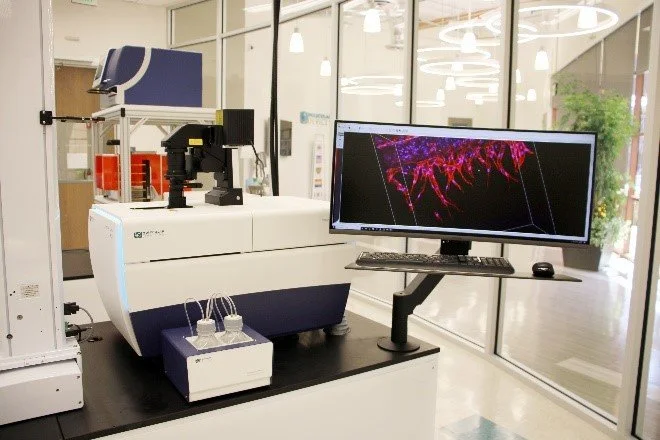Project Profile: Organoid Innovation Center
At the Organoid Innovation Center, Molecular Devices has expanded beyond imaging to demonstrate an end-to-end solution that standardizes the organoid development process with cell culture, treatment, and incubation capabilities, through to imaging, analysis, and data processing.
MOLECULAR DEVICES
Lab Design News speaks to Dan O’Connor, vice president, drug discovery, Molecular Devices, about the company’s Organoid Innovation Center in San Jose, CA. The center is 180 sq. ft., within a larger wet lab area measuring 1,440 sq. ft., and was completed in April 2021.
Q: What was the need for this facility? Is it replacing an outdated existing facility or accommodating new research/ a new program?
A: Molecular Devices successfully partners with customers to advance their 3D biology research by incorporating laboratory systems that automate and scale organoid workflows. This approach of designing a fully integrated, end-to-end solution—which encompasses organoid development through to high-content imaging and screening—has answered challenges our customers routinely experience when moving to 3D biology.
The idea for the Organoid Innovation Center was borne in part from a unique collaboration of this kind with Cincinnati Children’s Center for Stem Cell and Organoid Medicine (CuSTOM). We began working with the organization in 2018 to design and build out an automated workflow for 3D cell culturing and organoid screening in support of their mission to use advances in developmental biology and stem cell technologies to revolutionize personalized medicine and improve patient care. During this time, it became clear that there was a broader, industry-wide need for a complete, integrated system that could automate full 3D workflows from beginning to end of the cell development and screening process.
With intuitive scheduling software researchers control the entire 3D workflow remotely, tracking the cell journey from single cell to differentiated organoid, along the way. This allows research projects to scale, deliver consistent and unbiased results, as well as free up time, space, and staffing resources.
MOLECULAR DEVICES
Nearly every customer we consult with on 3D biology expresses a desire to work with more biologically-relevant samples—like organoids—but has trouble understanding what technology to invest in to ensure quality, repeatable results, or are deterred altogether by pain points around standard operating procedures when growing, culturing, imaging, and analyzing organoids. This is where the Organoid Innovation Center comes into play. As it stands, there aren’t many accessible, operational, off-the-shelf commercial systems that a lab manager or research organization can see and experience firsthand. The Organoid Innovation Center allows us to bring customers into the lab either physically, or remotely for those located anywhere in the world through sophisticated viewing technology. Either way, we’re able to demonstrate the 3D biology process in real time: from cell culturing, monitoring, and quality checks, all the way through to passaging, differentiation, and then organoid screening. This is a gamechanger for our customers that want to test automated 3D workflows for specific assays—or those looking to get into 3D biology but are not sure where to start.
Q: What kinds of sustainability initiatives have been included in the design plan?
At the heart of the Organoid Innovation Center is the ImageXpress® Confocal HT.ai High-Content Imaging System which enables advanced phenotypic screening of 3D organoid models, and is compatible with machine learning image analysis software from Molecular Devices.
MOLECULAR DEVICES
A: The Center is located at our headquarters in San Jose, which is also a certified California Green Business as of 2018. The company is committed to sustainability and conserving resources, and we’ve worked diligently to cut greenhouse gas emissions and hazardous waste, while saving energy, water, fuel, and natural gas usage. The facility has LED lighting, low flow water fixtures, and meets the state’s Building Energy Efficiency requirements.



